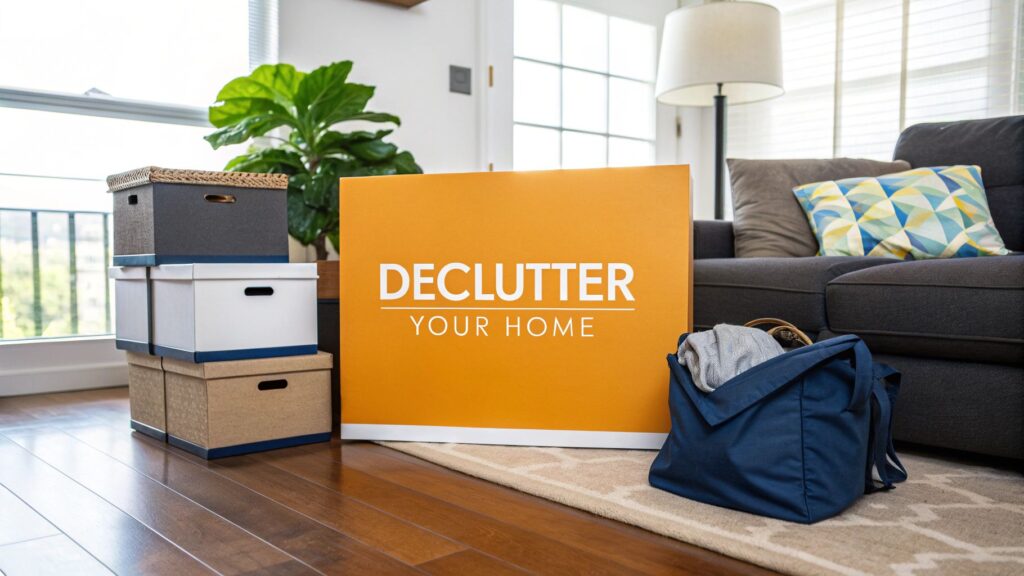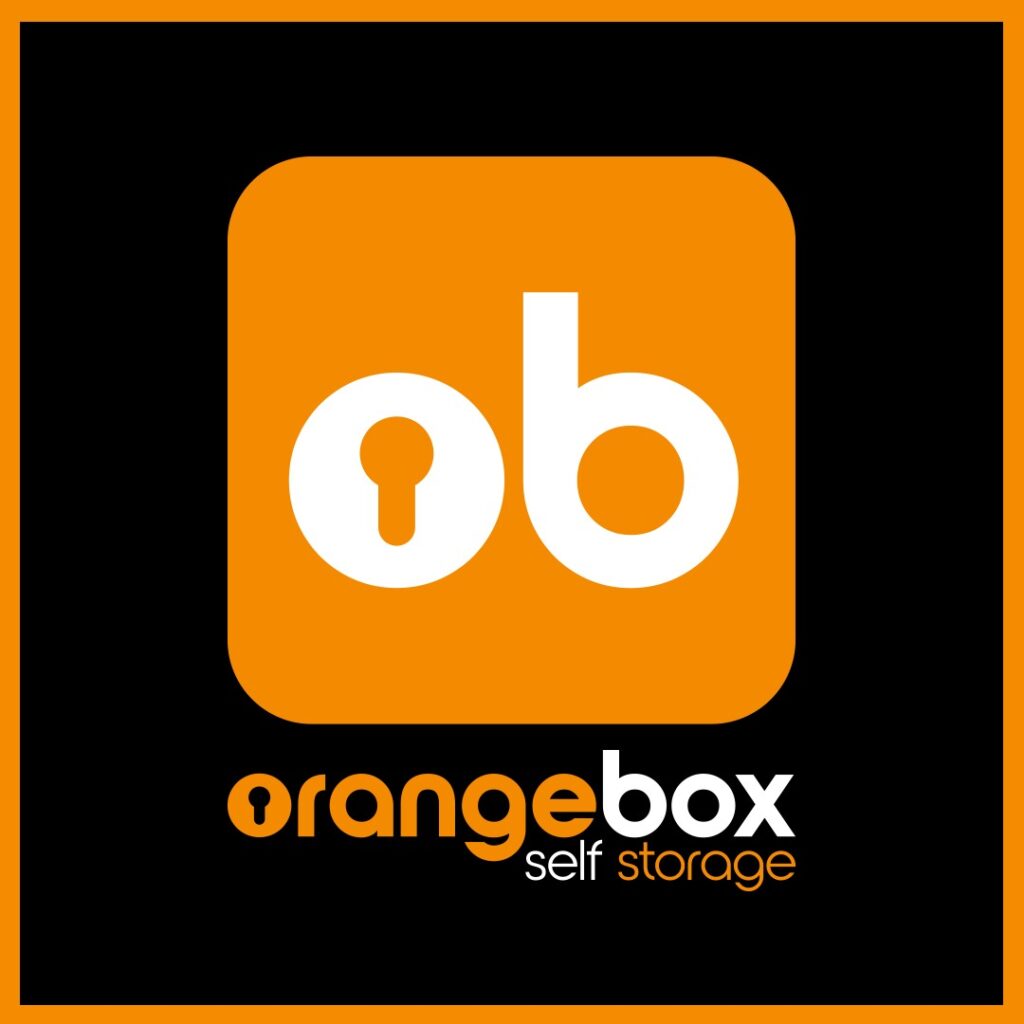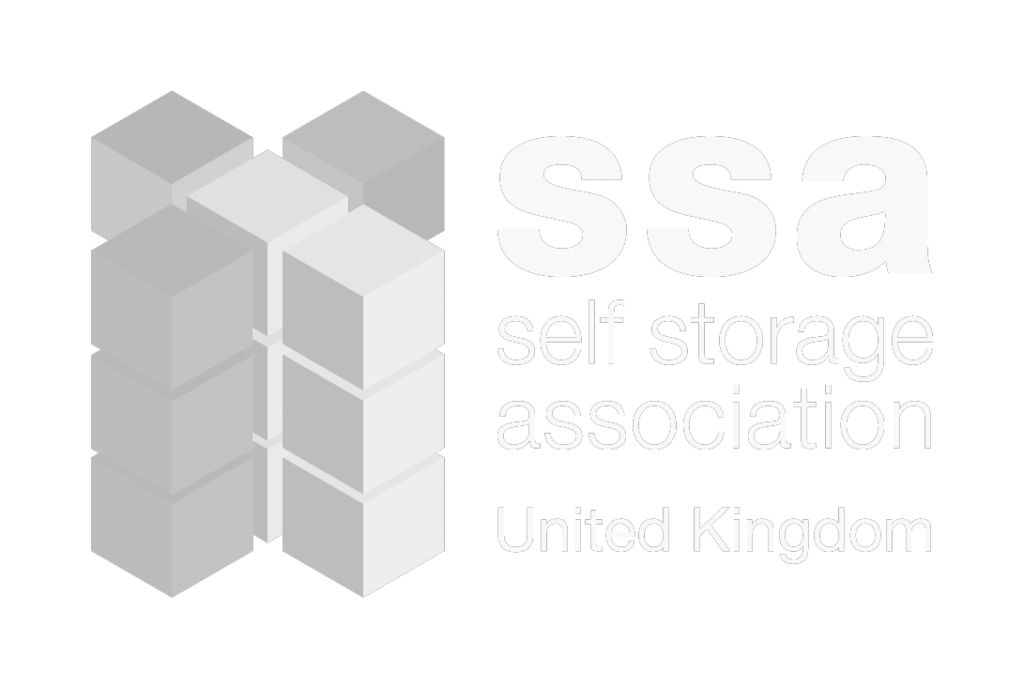Decluttering your home is about so much more than just a quick tidy-up. It's a surprisingly powerful way to cut down on stress and give your mental wellbeing a real boost. When you create an organised space, you're also making room for a clearer, more focused mind, which is often the spark you need to kickstart a lasting change.
Why Decluttering Your Home Boosts Mental Wellbeing
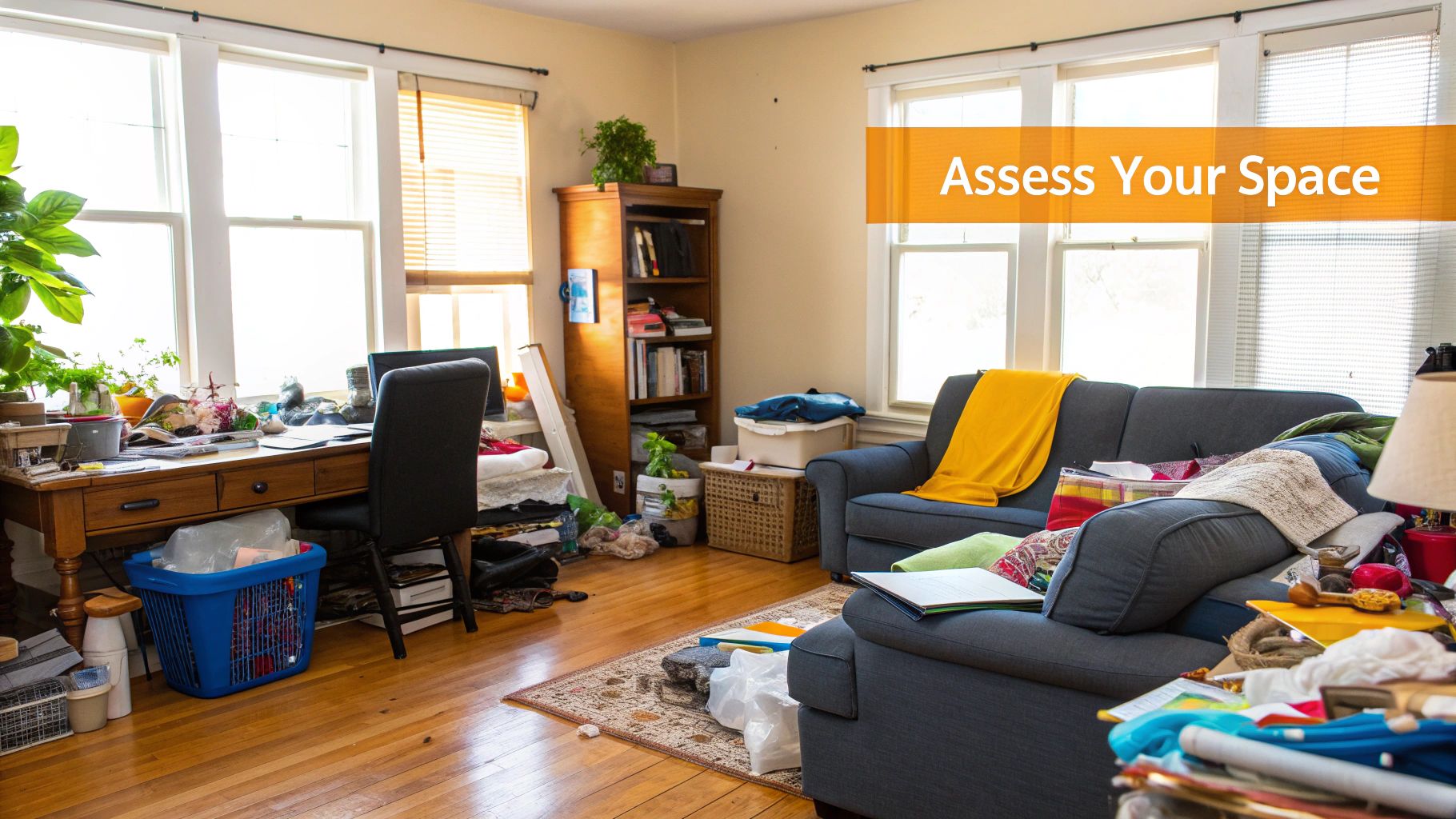
Ever walked into a messy room and felt your shoulders instantly tense up? That feeling is your brain reacting to visual chaos. A cluttered home isn't just a physical problem; it's a mental burden that can quietly drain your energy and stop you from ever truly relaxing.
When your surroundings are disorganised, your mind gets constant signals about unfinished tasks. That pile of unsorted post, the wardrobe overflowing with clothes, the kitchen worktops covered in things that don't belong there—they all fight for your attention. This non-stop, low-level stimulation can lead to some serious issues:
- Increased Stress and Anxiety: Your brain sees all that clutter as a chaotic environment, which can easily trigger a stress response.
- Reduced Focus: With so many distractions pulling your attention in different directions, it becomes much harder to concentrate on one thing at a time.
- Feelings of Overwhelm: The sheer volume of "stuff" can make even simple household chores feel like an impossible mountain to climb.
The Psychological Link Between Clutter and Your Mind
The connection between our environment and how we feel emotionally is well-documented. A disorganised home often mirrors a disorganised mind, making it incredibly difficult to find any mental clarity. This isn't just a vague feeling; it's a recognised psychological strain.
In fact, an estimated 18.8 million households in the UK are facing the challenge of decluttering their homes right now. According to a recent survey, clothing is the biggest headache, with 47% of people saying it’s a problem area. Psychotherapists often point to the psychological toll that clutter takes, linking it directly to increased stress, anxiety, and poor concentration. This really highlights why learning how to declutter your home is so crucial for better mental health. You can discover more about how clutter affects work and life on Psychreg.org.
By tidying your physical space, you are also making room for mental clarity. It's an act of self-care that tells your brain it's okay to switch off and relax.
This process isn't just about throwing things away. It’s about consciously choosing what to keep and creating a home that supports your energy, rather than drains it. The sense of accomplishment that comes from reclaiming your space is a powerful motivator, paving the way for a more organised and peaceful life.
Your Game Plan for a Successful Declutter
Diving into a decluttering project without a plan is a bit like trying to build flat-pack furniture without the instructions—it almost always ends in frustration. A truly successful clear-out doesn't start with a frantic rush, but with a bit of thoughtful preparation. The trick is to break down what feels like a massive task into smaller, more manageable chunks.
So, where to begin? Start by setting a realistic goal. Forget trying to tackle the entire house in one weekend; that's just a recipe for burnout. Instead, focus on one small area. It could be that one kitchen drawer that’s become a jumble of utensils, the growing pile on your bedside table, or a single shelf in the living room that’s a magnet for odd bits and pieces. This approach builds momentum and gives you the confidence to keep going.
Before you even touch a single item, it's worth getting your supplies ready. Having everything you need on hand stops you from getting sidetracked searching for bin bags or boxes.
Here’s a quick checklist of what you'll need to get started:
Your Decluttering Starter Kit
| Item | Purpose |
|---|---|
| Sturdy Boxes or Bags | For sorting your items into different categories (Keep, Donate, Bin, etc.). |
| Marker Pens & Labels | To clearly mark each box, so you know exactly what’s inside. |
| Bin Bags | For items that are broken, expired, or beyond saving. |
| Cleaning Supplies | Wipes, dusters, and a hoover for cleaning the space once it’s empty. |
| Timer | To help you stay focused in short, productive bursts. |
Gathering these essentials first means you can dive straight into the sorting process without any interruptions.
The Four-Box Method
One of the most effective strategies I’ve come across is the four-box method. It's a simple system that cuts through the indecision and helps you sort things out quickly. Before you start on your chosen spot, grab four boxes or bags and give them these labels:
- Keep: This is for the things you genuinely love, use regularly, and that have a clear purpose in your life.
- Donate/Sell: For items in good nick that you no longer need, but someone else could get great use out of.
- Bin: For anything that’s broken, past its use-by date, or just not usable anymore.
- Relocate: This is for all those things that have a proper home somewhere else in the house but have somehow wandered off.
This structured approach stops you from just shuffling clutter from one pile to another. As you pick up each item, you make a quick decision and pop it into the right box. If you find yourself with a growing 'keep' pile but nowhere to put everything, using personal storage solutions can be a game-changer for managing seasonal gear or sentimental belongings without them cluttering up your daily life.
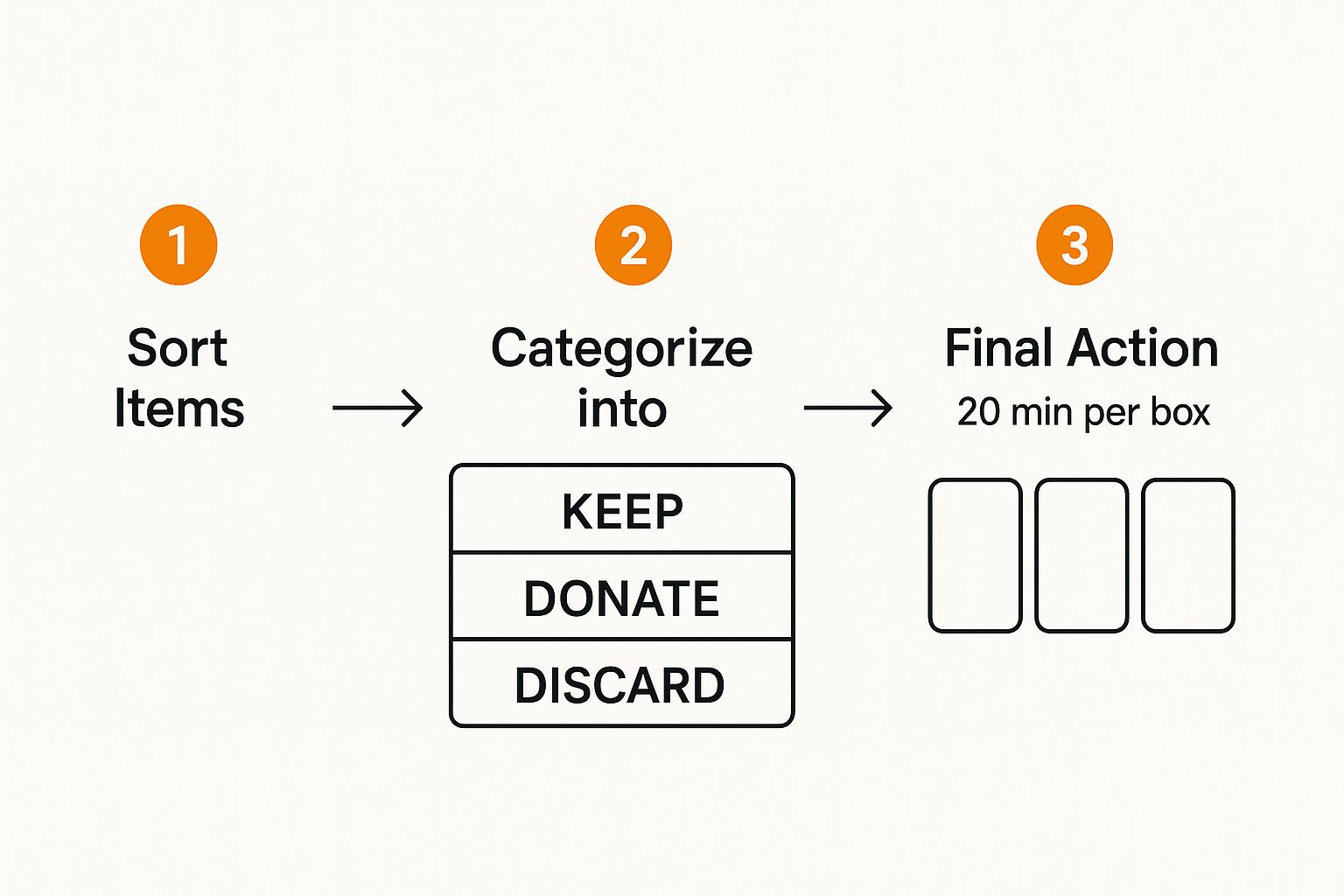
The idea of breaking the task down into timed chunks, as shown above, is brilliant. By dedicating just 20 minutes to each category, you can make some serious headway without feeling completely drained.
Overcoming the Overwhelm
It's completely normal to feel a bit apprehensive before you start. A survey from Good Housekeeping revealed that while 95% of people actively try to declutter, nearly 29% admitted to feeling overwhelmed by just how big the project felt. This is exactly why starting small is so crucial—it builds the confidence you need to keep going.
Your goal isn't perfection; it's progress. A tidy drawer is a victory that fuels your motivation to tackle the next small space, creating a positive cycle that leads to a calmer, more organised home.
A Room-by-Room Guide to Reclaiming Your Space
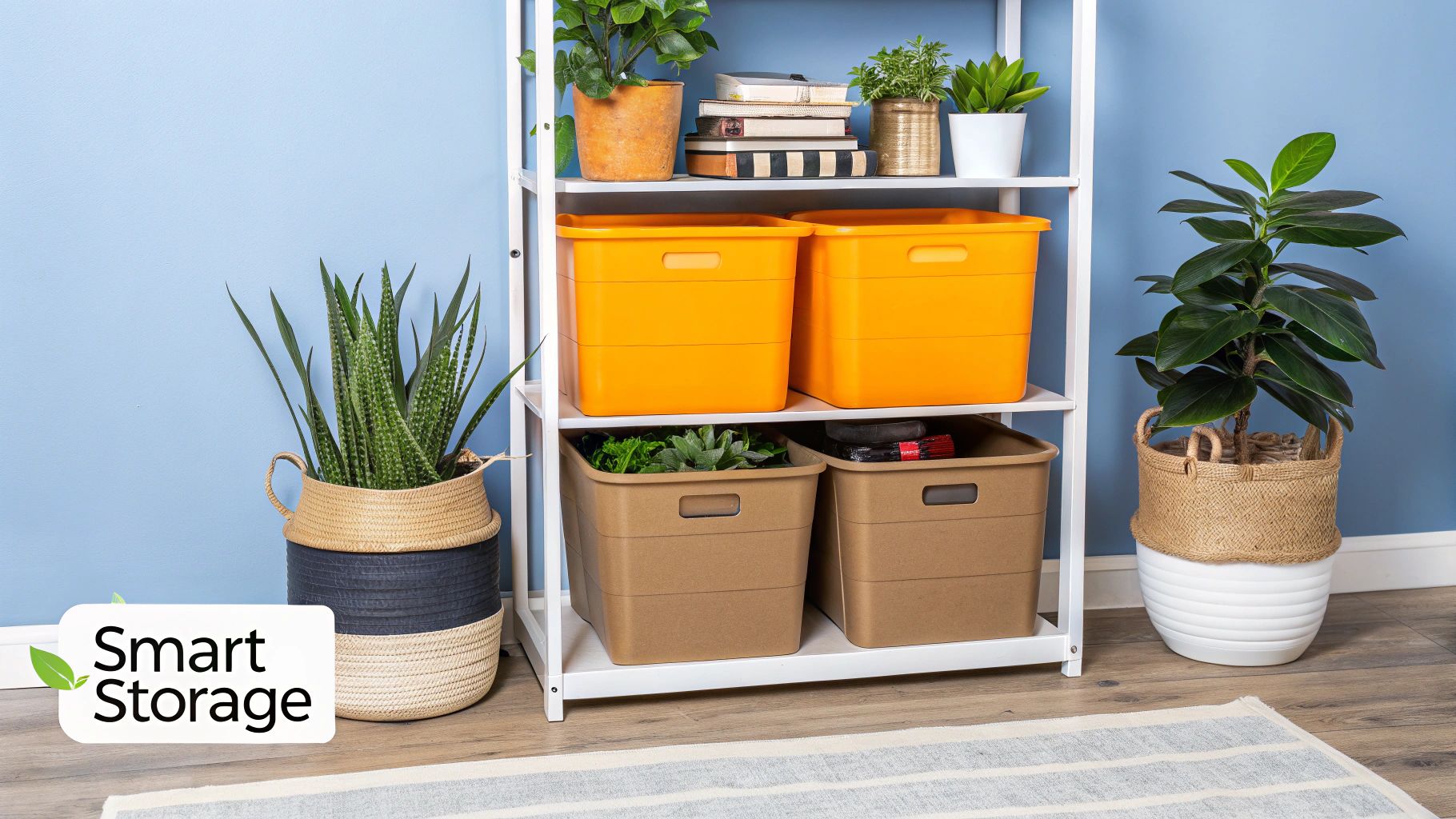
Trying to tackle your entire home in one go is a recipe for overwhelm. A much better approach? Break it down room by room. This turns a mountain into a series of manageable molehills. Each space in your home comes with its own unique clutter challenges and hotspots. By focusing your energy on one area at a time, you’ll make tangible progress that actually inspires you to keep going.
This room-by-room strategy is designed to help you reclaim your space with a clear, actionable plan. We'll pinpoint the most common clutter magnets and offer specific solutions to restore a bit of order and calm.
Conquering the Kitchen Worktops
The kitchen is often the heart of the home, which also means it’s a prime target for clutter. From half-used spice jars to duplicate gadgets, it’s far too easy for worktops and cupboards to become a disorganised mess. To avoid feeling defeated before you even begin, just start with a single worktop or one cupboard.
A pantry audit is a great first step. Pull everything out and be ruthless with anything past its expiry date. You’ll be genuinely surprised by how much space you free up just by binning out-of-date tins and packets. Next, it’s time to tackle your gadgets and utensils.
- Duplicate Gadgets: Do you really need three different can openers or four whisks? Keep the best one and donate the rest.
- Single-Use Items: That avocado slicer or banana guard might have seemed like a brilliant idea at the time, but if you only use it once a year, it’s just taking up valuable drawer space.
- Mismatched Containers: Go through your plastic container collection and match every lid to a base. Recycle any that are single, cracked, or stained.
By clearing your worktops, you not only create more room for meal prep but also make the entire kitchen feel more spacious and inviting.
Creating Calm in the Living Room
Your living room should be a place to relax, not a storage area for miscellaneous odds and ends. The biggest culprits here are often piles of old magazines, remote controls for devices you no longer own, and decorative items that just don't bring you joy anymore.
Start with the coffee table—it often becomes a dumping ground for the chaos of daily life. Clear everything off, give it a good clean, and then be very intentional about what you put back. A small tray can neatly corral remotes, coasters, and a candle, instantly making the space look more pulled together.
The key to a calm living room is giving every item a designated home. When things have a place to live, tidying up becomes a quick, five-minute task rather than a major chore.
Take a look at your media collection. Are you holding onto DVDs and CDs you haven't touched in years? Digital streaming has made many physical media formats redundant. If you’re not quite ready to part with them completely, you could consider boxing them up for safekeeping. Exploring options for long-term storage solutions can help you protect cherished collections without sacrificing precious living space.
Reclaiming Your Bedroom Sanctuary
Your bedroom should be a peaceful retreat, but it can quickly become chaotic with overflowing wardrobes and cluttered bedside tables. When it comes to clothes, the 'one-year rule' is your best friend. If you haven't worn an item in the last 12 months, it’s time to let it go.
Go through your wardrobe section by section—start with jumpers, then move on to trousers, and so on. This approach feels far less daunting than emptying the entire thing at once. As you sort, you’ll likely rediscover clothes you completely forgot you even owned.
Next, turn your attention to the bedside table. This small surface can have a surprisingly big impact on how calm your room feels.
- Remove anything that doesn't belong, like empty glasses or old post.
- Keep only the essentials: a lamp, your current book, and perhaps a small dish for jewellery.
- Use the drawer for items like hand cream, chargers, and notebooks to keep the surface clear.
A tidy bedside table signals to your brain that it's time to rest, helping you switch off at the end of a long day and improve your sleep quality. It's a small change that makes a huge difference.
How to Decide What Stays and What Goes
Making the call on what to keep versus what to let go of is often the toughest part of the entire decluttering process. This is where the emotional side really kicks in, turning what should be a straightforward task into a series of difficult decisions. The secret is to have a simple framework ready to go, which helps take some of that emotional weight off your shoulders.
Instead of getting bogged down in "what ifs," try asking a few direct but powerful questions as you handle each item. This mental checklist helps you shift from a purely emotional reaction to a more logical one, making it much easier to see what truly adds value to your life.
- Have I used this in the last year? Be brutally honest with yourself. If it’s been hiding at the back of a cupboard for more than 12 months, chances are you won’t even notice it’s gone.
- Would I buy this again today? This question is brilliant for cutting through sentimental attachment. If you wouldn’t spend your hard-earned money on it now, it might be time to say goodbye.
- Do I have something else that does the same job? You probably don’t need three different can openers or multiple sets of measuring spoons. Keep the best one and enjoy the extra space.
This no-nonsense approach helps you make quick, confident choices, turning indecision into decisive action.
Handling Sentimental Items with Care
Some things are just harder to part with than others. Old photographs, your children’s first drawings, and inherited trinkets can feel impossible to let go of, even if they’re just sitting in a box gathering dust. You don't have to erase every memory, but there are creative ways to honour them without the physical clutter.
A great technique is to take a high-quality photo of the sentimental item. This way, you preserve the memory and the feeling associated with it, without needing to keep the object itself. You could even create a digital photo album dedicated to these cherished memories.
For those special items you truly can't part with but don't need daily access to, using a storage unit is an excellent solution. It keeps them safe and out of your way, freeing up valuable space at home. Just make sure you pack them correctly to avoid any damage down the line; you can learn more about common storage unit mistakes and how to avoid them in our detailed guide.
Your UK Guide to Donating and Recycling
Once you have your "Donate/Sell" and "Bin" piles sorted, the next job is to get rid of them responsibly. Fortunately, there are plenty of UK-specific options to make it easy.
Donating and Selling:
Charity shops on your local high street are always grateful for good-quality donations of clothes, books, and homeware. For more valuable items, online marketplaces like Vinted, eBay, or Facebook Marketplace are fantastic for reaching a wider audience and making a bit of cash. Community groups like Freecycle are also perfect for giving items a new home locally, completely free of charge.
Recycling and Disposing:
For everything else, your first port of call should be your local council’s website. They provide detailed information on what can go in your household recycling bins and where your nearest recycling centre is for larger items or electronics. This ensures you’re decluttering in a way that’s both organised and kind to the environment.
Creating Habits to Keep Your Home Clutter-Free
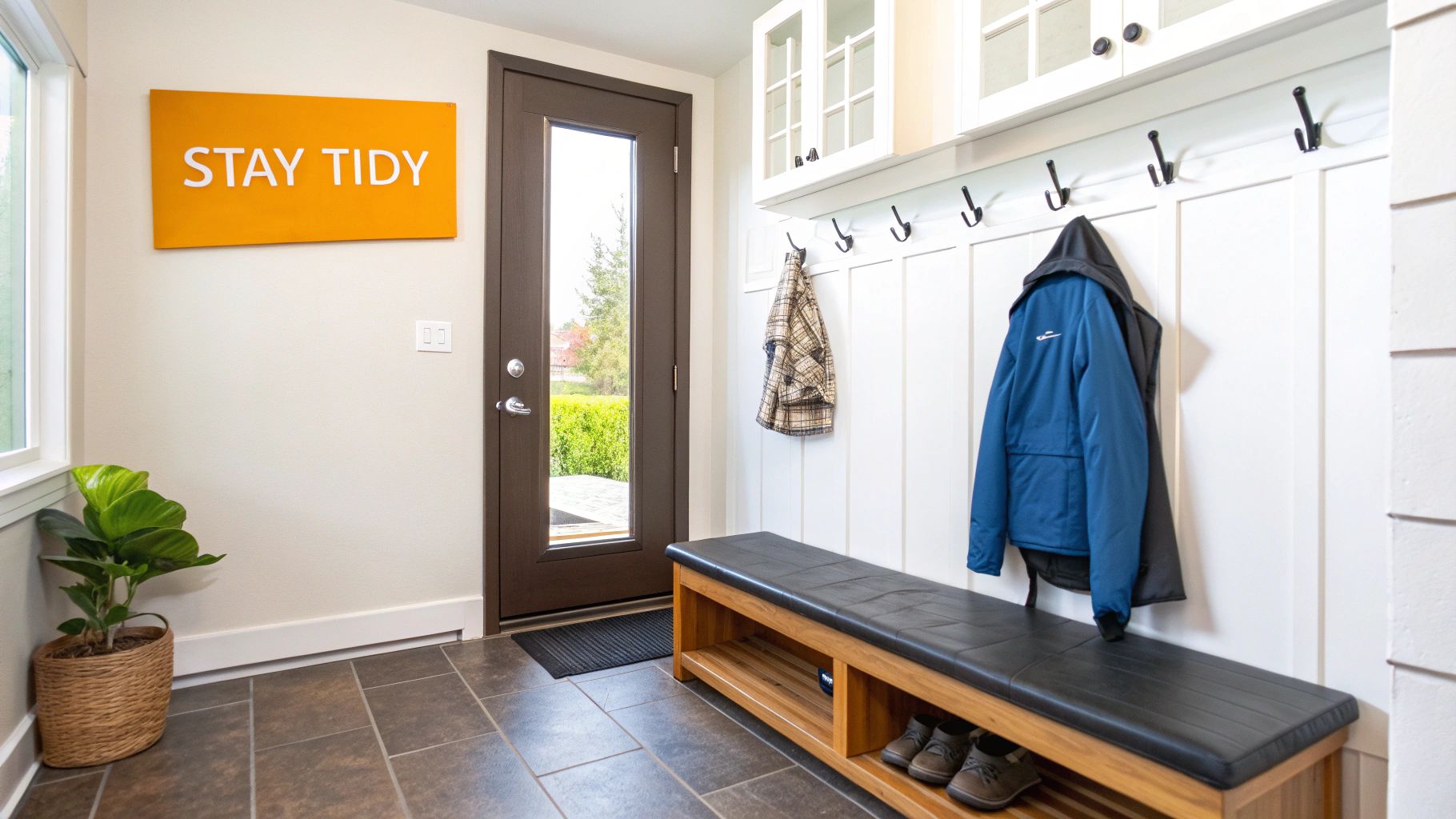
Successfully decluttering your home is a huge achievement, but the real victory lies in keeping it that way. The final, and arguably most important, part of learning how to declutter is shifting your mindset. It’s not about a frantic, one-off clear-out, but about building simple, sustainable habits that prevent clutter from creeping back in.
This transition from a massive overhaul to a lifestyle of mindful organisation is easier than you might think. It all starts with one core principle.
Give Every Item a Home
The single most effective strategy for maintaining order is to ensure that every single item you own has a designated home. When things have a place to live, tidying up becomes a quick, almost instinctive process of putting them back where they belong, rather than a frustrating search for a spare surface.
This doesn't mean you need a perfectly labelled container for everything. It's as simple as deciding that keys always go in a bowl by the door, unopened post lives in a specific tray, and shoes are stored on a rack instead of piled up in the hallway.
Without a designated spot, items become clutter magnets. A single stray magazine on the coffee table quickly attracts company, leading to a disorganised pile. Assigning homes to your belongings breaks this cycle before it can even start.
Master Your Space with Clever Storage
Once you know where things should live, clever storage solutions can make maintaining order feel effortless. The goal isn't to hide mess but to make your designated homes more efficient and accessible. Small tweaks can make a massive difference.
- Embrace Vertical Space: Don't forget to look up! Adding tall, narrow shelving units in overlooked corners or above doorways can dramatically increase your storage capacity without taking up valuable floor space.
- Divide and Conquer: Use simple drawer dividers in the kitchen, bedroom, and bathroom. They stop smaller items from becoming a jumbled mess and make finding what you need quick and painless.
- Use Clear Containers: For items you don't use daily, like seasonal decorations or craft supplies, storing them in clear boxes allows you to see what's inside at a glance.
Build Simple Daily and Weekly Routines
The key to long-term success is integrating small, consistent actions into your daily life. These aren't huge chores; they are tiny habits that collectively keep clutter at bay.
The ‘one-in, one-out’ rule is a fantastic place to start. Every time you bring a new item into your home—be it a pair of shoes, a book, or a new kitchen gadget—an old one must go. This simple transaction maintains equilibrium and stops your cupboards from overflowing.
Another powerful habit is the 10-minute evening tidy-up. Before you settle down for the night, spend just ten minutes putting things back in their designated homes. This quick reset clears surfaces and ensures you wake up to a calm, organised space, setting a positive tone for the entire day. It's a small investment of time that pays huge dividends for your peace of mind.
Here’s a quick look at some simple habits that can make a world of difference in keeping your home tidy.
Simple Habits for a Tidy Home
| Habit | Frequency | Impact |
|---|---|---|
| 10-Minute Tidy | Daily | Resets your space and prevents small messes from piling up. |
| One-In, One-Out Rule | Per Purchase | Stops the accumulation of new items and maintains balance. |
| Make the Bed | Daily | Instantly makes the bedroom look neater and more inviting. |
| Clear Surfaces | Daily | Wipes down kitchen counters and clears coffee tables for a clean feel. |
| Weekly Declutter Hotspot | Weekly | Tackles one problem area (like a junk drawer) for 15 minutes. |
| Deal with Post Immediately | Daily | Prevents paper clutter from accumulating on surfaces. |
Adopting even a few of these routines can transform how you manage your home, making tidiness a natural part of your day rather than a monumental task.
Common Decluttering Questions Answered
Even with a solid plan, it’s easy to hit a roadblock when you're decluttering. Certain questions pop up time and again, and knowing the answers can keep you from losing momentum when you feel stuck.
One of the biggest hurdles is simply feeling overwhelmed. If you're staring at a mountain of stuff and don't know where to begin, my best advice is to think small. Don't try to tackle the entire room at once. Instead, start with a single, tiny drawer. Celebrate that small win, and let that feeling of accomplishment fuel you to move on to the next small area.
Getting the Family Involved
Getting everyone on board is another common challenge, isn't it? Instead of presenting decluttering as another chore you're doing alone, frame it as a collaborative family project. Make it fun—put on some music or turn it into a game to see who can fill a donation bag the fastest.
This teamwork is crucial because clutter often becomes a point of tension in a household. In fact, a UK survey revealed that 61% of residents argue about clutter at least once a month, with conflicts popping up most often between partners. By working together, you not only share the load but also dial down the household stress. You can learn more about these clutter-related household statistics.
Making decluttering a shared responsibility teaches valuable lessons about ownership and respect for your living space. It transforms a dreaded task into a positive, team-building activity.
Finding New Homes for Your Items
What about those good-quality items that charity shops might not accept? This is a frequent problem, but there are plenty of great alternatives. Online platforms like Freecycle or local Facebook community groups are fantastic for giving items a new home for free. You get the satisfaction of helping someone out while keeping perfectly usable things out of landfill.
Sometimes, though, the biggest challenge is figuring out what to do with the items you want to keep but just don't have room for right now. This is where self-storage can be an invaluable tool, especially for seasonal things or sentimental belongings you're not ready to part with. If you're unsure what type of unit you'd need, check out our guide comparing indoor vs container storage options to find the perfect fit.
Need a secure, accessible place for the items you love but don't have space for? Orange Box Self Storage offers flexible and affordable solutions to help you maintain a clutter-free home. Find your perfect unit today at https://orangebox-selfstorage.co.uk.

